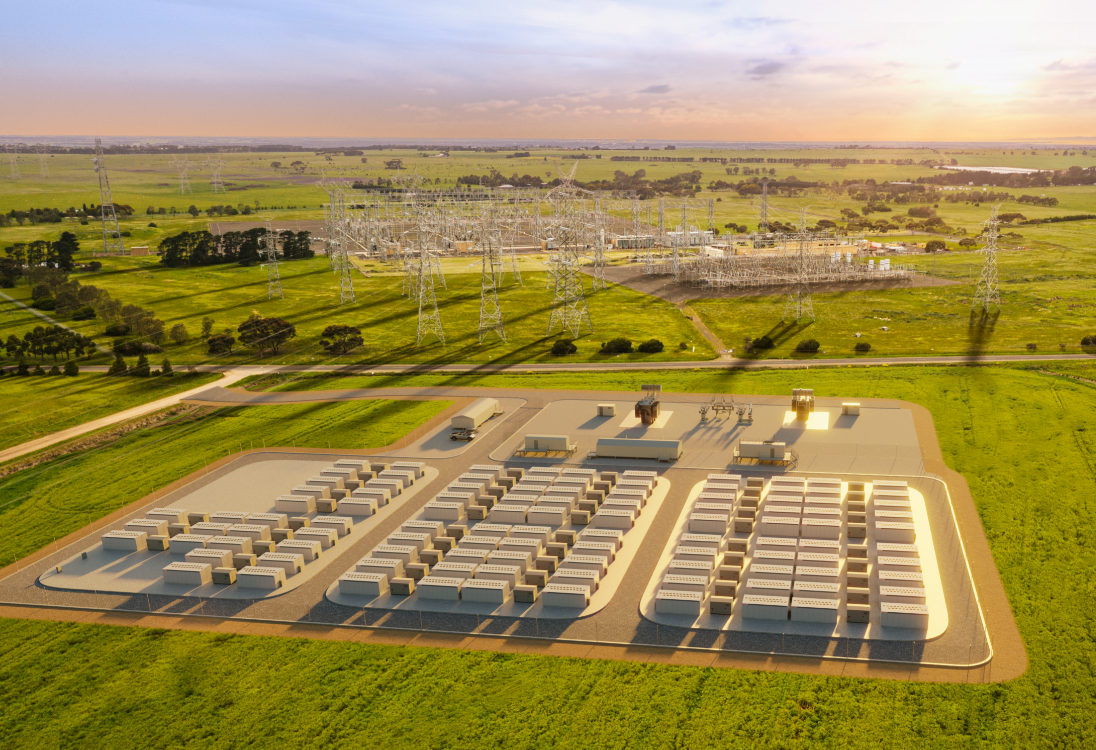
Over a gigawatt of battery storage has been proposed in a plan to enable the wider rollout of renewables by Powercor, owner and operator of an electricity distribution network serving more than 800,000 customers in the Australian state of Victoria.
The group’s network includes over half a million electricity poles and nearly 90,000km of power lines. In the Integrated System Plan (ISP) published by the Australian Energy Market Operator (AEMO) which models scenarios for achieving long-term reliability, economic and decarbonisation goals, six large Renewable Energy Zones (REZs) were identified for Victoria. Four of those would be inside Powercor’s service territory.
Enjoy 12 months of exclusive analysis
- Regular insight and analysis of the industry’s biggest developments
- In-depth interviews with the industry’s leading figures
- Annual digital subscription to the PV Tech Power journal
- Discounts on Solar Media’s portfolio of events, in-person and virtual
Or continue reading this article for free
A Development Plan for those zones, each of which will host hundreds of megawatts of wind, solar and hydro resources, will be funded by a AU$540 million (US$420.6 million) REZ fund, administered by a newly created body called VicGrid, the government of Victoria said in a REZ Directions Paper in February.
That funding will be part of a wider AU$1.8 billion clean energy package within the state government budget and as our sister site PV Tech reported in coverage of that paper, the REZ plan could unlock 10GW of new renewable energy capacity within the state by 2040, adding to around 6GW already deployed or planned those zones.
Powercor has just published its own plan in response to the Victoria government’s discussions paper, which involves unlocking 1.3GW of capacity on its existing network and helping enable some of that large-scale renewables capacity. There is already around 2GW of renewable energy generation connected to the company’s network and there are around 2.3GW of active connections enquiries or applications in the queue which range in project size from 1MW to 150MW.
The distribution provider proposed two sets of network upgrade activities: the deployment of synchronous condensers across the network to support renewable energy connections to transmission and distribution (T&D) networks and to upgrade strategic points along its 66kV network to enable large solar and wind projects to connect to the grid.
Additionally, it said that grid-scale batteries totalling up to 1.1GW could be installed across as many as 20 network sites in the central, western and northern regions of Victoria. The battery storage systems could release transmission constraints as well as providing benefits to the local community.
Powercor said the plan’s proposed asset deployment and upgrades could be done on existing land assets that the distribution group holds and would require no new land acquisition or increased build-out of infrastructure that could be considered an eyesore by communities.
Powercor’s general manager of electricity networks, Mark Clarke, said in a press release that distribution grid-level battery storage and infrastructure upgrades to enable renewables could mean that more generation could be built out faster and in a more distributed fashion than large-scale renewables connected to the transmission network could.
“Connecting renewable energy at the distribution network level is fast, simple and generates greater benefits more broadly spread out at the local level. The real opportunities come from creating jobs and network capacity that will benefit a large number of diverse communities,” Clarke said.
“We can support new renewable generation while also improving power reliability and network capacity for more solar, EV charging infrastructure and battery programmes in local communities.”
In February, the Victorian Big Battery (VBB), a 300MW / 450MWh large-scale ESS project which will be among the largest in the world, received an investment commitment of AU$160 million from the national Clean Energy Finance Corporation (CEFC), which invests in clean technologies on behalf of the Australian government.
The project will also be funded by equity from developer Neoen and will help mitigate the impact of peak demand on the state’s electricity networks, as well as freeing up around 250MW of capacity on an interconnector between Victoria and the state of New South Wales. It will use Tesla’s Megapack ESS solutions and is already under construction. A report published in September last year assessed that two large-scale battery storage projects already operational in Victoria met or exceeded both technical and economic expectations in the first year in use.
